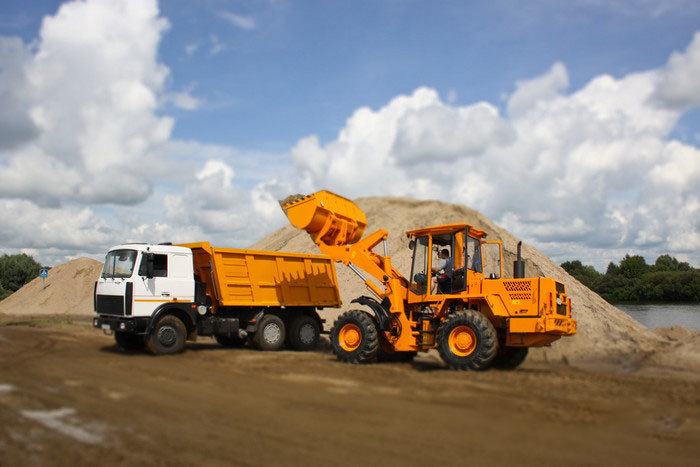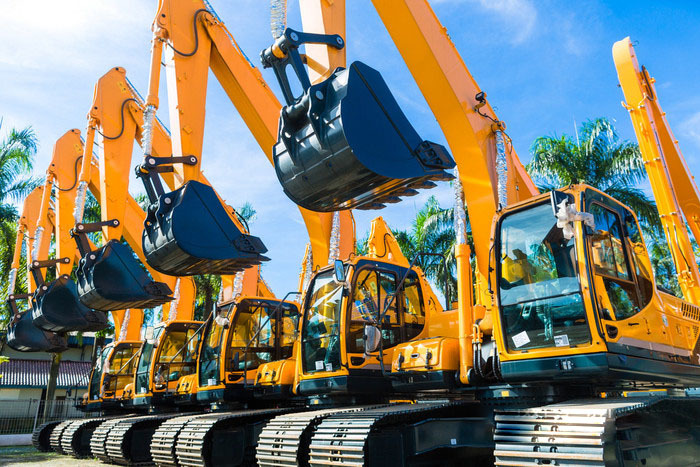The hydraulic oil replacement method that makes the excavator reborn
Release Time:
Jun 30,2021
The traditional method of replacing the hydraulic oil of an excavator is nothing more than drawing out the hydraulic oil in the hydraulic oil tank, replacing the hydraulic oil filter element, and refilling the new hydraulic oil. This method can only replace 48% of the hydraulic oil in the system. When 52% of the dirty oil remaining in the system is mixed with the new hydraulic oil, the service life of the hydraulic pump and other components is greatly reduced.

The traditional method of replacing the hydraulic oil of an excavator is nothing more than drawing out the hydraulic oil in the hydraulic oil tank, replacing the hydraulic oil filter element, and refilling the new hydraulic oil. This method can only replace 48% of the hydraulic oil in the system. When 52% of the dirty oil remaining in the system is mixed with the new hydraulic oil, the service life of the hydraulic pump and other components is greatly reduced.
Take Volvo 360B excavator as an example. The total amount of hydraulic oil in the system is 500L, while there is only 220L of hydraulic oil in the hydraulic oil tank. If only the hydraulic oil in the hydraulic oil tank is replaced, only less than 1/2 of the total amount of hydraulic oil in the system will be replaced. Here are the methods to replace 95% of the hydraulic oil in the system as follows:
(1) Park the machine on a flat ground, remove the bucket, turn off the engine, remove the bucket cylinder tubing connector at the end of the boom, and install the plug. Start the engine and slowly raise the starter arm so that the bucket cylinder piston rod slowly extends to the end of the bucket cylinder stroke under its own weight. After all the hydraulic oil in the lower cavity of the bucket cylinder is drained, the excavating boom and stick are restored to their original positions.
The hydraulic oil replacement method that makes the excavator reborn
(2) Remove the pin at the front end of the stick cylinder, retract the stick cylinder to the end of its stroke and turn off the engine. Remove the tubing joint on the end of the stick cylinder against the boom (fix the stick cylinder piston before removing the tubing to prevent the stick cylinder from suddenly extending out under its own weight, causing injury), and let the stick cylinder slow down under its own weight Extend slowly until the end of the stroke to drain all the hydraulic oil in the lower cavity of the stick cylinder.
(3) Remove the boom, and slowly place the boom cylinder to a horizontal position. Pull the boom cylinder plug rod back and forth for 2 strokes to the end, discharge all the hydraulic oil in the upper and lower chambers of the boom cylinder, and install the boom cylinder.
(4) Evacuate the hydraulic oil in the hydraulic oil tank, remove the oil drain plug under the hydraulic oil tank and the hydraulic pump, drain the residual hydraulic oil inside and install the oil drain plug.
(5) Clean the hydraulic oil tank, replace the oil return, oil suction, pilot and drain filter elements, replace the respirator on the hydraulic oil tank cover, add new hydraulic oil, and make the hydraulic oil level rise to 200mm from the top of the tank to stop refueling.
(6) Unscrew the 2 bleed screws on the hydraulic pump, and tighten the bleed screws when the hydraulic oil flows out from the two bleed ports and there is no air bubbles. Start the engine and observe the boom and stick cylinder tubing. When clean hydraulic oil flows from the stick and boom tubing, install the tubing back to its original position (if clean hydraulic oil does not flow out, open the separation handle and slowly Operate this action until clean hydraulic oil flows out).
(7) Remove the plug on the bucket cylinder pipeline, start the engine, observe the bucket cylinder tube, turn off the engine when there is clean hydraulic fluid flowing out, install the bucket cylinder tubing (if there is no clean hydraulic oil flowing out, open the separation handle, Slowly manipulate the bucket control handle until clean hydraulic oil flows out from the oil pipes on both sides).
(8) Remove the cover plates on both sides of the walking motor, remove the joints of the 2 main oil pipes and the oil return pipe, start the engine, observe the 2 oil ports and the oil return pipe, and install the oil pipes in place when clean hydraulic oil flows out.
(9) Remove the two main oil pipe joints of the rotating motor, start the engine, turn off the engine when clean hydraulic oil flows out of the two oil ports on the side of the rotating motor, and install plugs on the two oil ports of the rotating motor. Start the engine again, open the separation handle and slowly manipulate the rotating joystick until the two oil pipes are flowing out of clean hydraulic oil.
(10) Remove the plug on the rotating motor and install the oil pipe. Check the hydraulic oil check ruler. If the liquid level is lower than the standard line, add hydraulic oil so that the liquid level is 200mm from the top of the tank. Start the engine and open the separation handle. Slowly manipulate the boom, bucket, and stick to the end of the stroke on both sides. Manipulate walking slowly, rotate the joystick, and move in every direction. Park the excavator at the oil level inspection position, check the hydraulic oil level, and add hydraulic oil to the standard line.
The method of replacing hydraulic oil on other brands of excavators is basically the same. Just prepare 2 bucket tubing plugs (by one end of the boom) before replacement, 2 plugs for the main oil port of the rotating motor, and 1 set of 5t hoisting equipment. Although the procedure of this replacement method is a bit more complicated, it can completely replace the old oil in the machine. If the maintenance cost is not considered, it is still very good for the maintenance of the machine.
Keywords:
More information






